
ACU launches EthicsFinder
News 18 NovemberA message from Deputy Vice-Chancellor (Ethics) Professor Hayden Ramsay: Explore our new ‘one-stop shop’ expertly curated search engine database: EthicsFinder.
26 November 2020
Share
Professor John Haldane
In general, less is learned when all goes well or follows the usual course than when difficulties or problems or perplexities arise. Whether in art, science, philosophy or theology, or in everyday life, it is when things take a puzzling course, or confusions arise or things go wrong, that there is the opportunity, and the need to make sense of them. Doing so may not solve the problem but it can lead to an understanding of what is at issue and that itself is an important advance.
The expression ‘ethical dilemma’ has become overused and often applied without much if any thought about what it actually means. A conflict of interests need not be a dilemma, nor need a situation in which the usual course of action is called into question by unusual circumstances. A decision can be hard to make for all sorts of reasons but a dilemma, strictly speaking’ is something more, arising from the internal structure of the things in question.
In earlier times, before talk of ‘ethical dilemmas’ had become a cliché, people tended to speak of ‘moral quandaries’ or ‘predicaments’, and if one goes back further into the middle ages the terms used were ‘confusion’ or ‘perplexity’ the latter coming directly from the Latin perplexitas meaning completely entangled. Some decisions are hard to make because of the inconvenience, or cost or discomfort of following them through; others are difficult but it isn’t clear what if anything is the right thing to do.
It is the second sort of moral perplexity I am concerned with here because it can teach us something important about morality itself and show why certain favoured approaches to ethics are inadequate. In the recent past a whole business has grown up around providing ‘ethical advice and counselling’ to companies and institutions. This generally takes the form of identifying codes and requirements showing how these might be applied in various scenarios. This has its uses, but it tends to be rather shallow and formulaic, skating over the surface and providing procedures and ‘workarounds’ rather than confronting the intractability of serious moral quandaries, or understanding why they may arise.
A better source for thinking about dilemmas is literature, for imaginative writers have a feeling for the complexity of human life and a gift for dramatizing its conflicts. Think of William Styron’s novel Sophie’s Choice in which the main character is sent to Auschwitz with her two children and forced to choose which of them is to die in the gas chambers and which is to be sent to a labour camp. Or consider Herman Melville’s Billy Budd in which Captain Vere has to choose between upholding martial law in the midst of war and granting mercy to the largely innocent seaman Budd.
Another naval example, which like Billy Budd was the subject of a fine film, is Nicholas Monsarrat’s, The Cruel Sea. The story is set during the Second World war and focuses on two related decisions. Captain Ericson has been recalled from serving as a Merchant sailor to command a lightly armed British corvette, the Compass Rose, sailing the Atlantic to protect merchant ships bringing food and other supplies to Britain. At one stage the cargo ships are under attack and there is a circling pack of German U boats. Eleven ships have already been sunk and now more have been hit. The Compass Rose is the nearest to the survivors but if Ericson stops to rescue the merchant sailors his own ship will be silhouhetted against the flames and expose him and his crew to attack from the enemy submarines. He has to decide what to do and chooses to stop and get the survivors on board. By good fortune his choice fares well.
Later, however, another merchant ship is sunk and Ericson again decides to rescue the survivors, but as he directs the ship towards "the bobbing heads that dotted the surface of the water" one of his crew hears the echo from the underwater sonar revealing the enemy U boat. Ericson prepares to drop depth charges but "as Compass Rose turned inward towards the target, gathering speed for the onslaught, they all noticed something that had escaped their attention before. The place where the U-boat lay, the point where they must drop their charges, was alive with swimming survivors". Ericson faces another dilemma, whether to pursue the submarine or to rescue the survivors. This choice is more terrible since pursuit involves not just risking deaths but causing them. He knows where the U boat is and has a perfect opportunity to destroy it, saving future ships, their essential cargos and the lives of their crews, but by dropping the charges he will kill the British sailors in the water. What to do?
"As the seconds sped by, and the range closed, he fought against his doubts, and against the softening instinct of mercy; the book [of Navy instructions] said: ‘Attack at all costs’ and this was a page out of the book, and the men swimming in the water did not matter at all., when it was a question of bringing one of the killers to account. But for a few minutes longer he tried to gain support and confidence for what he had to do" … "With no more hesitation he gave the order … many of the men in the water waved wildly as they saw what was happening: some of them screamed … the ship came in like an avenging angel cleaving the very knot of swimmers: the amazement and horror on their faces was reflected aboard Compass Rose, where many of the crew, particularly among the depth charge parties aft, could not believe what they were being called upon to do.” … "No one looked at Ericson as they left that place: if they had done so, they might have been shocked by his expression and his extraordinary pallor. Now deep in self-torture, and appalled by what he had done, he had already decided that there had been no U-boat there in the first place … Either way, the slaughter he had inflicted was something extra, a large, entirely British made contribution to the success of the voyage".
I suggested that consideration of moral quandries can reveal something important about morality itself and indicate the inadequacy of standard ethical theories. Thinking about serious predicaments such as those faced by Sophie, Vere, Ericson, or real world counterparts, has led philosophers to draw such distinctions as those between doing and allowing harms, promoting and protecting goods, and intending and merely foreseeing effects. But here I am concerned with a broader and less commonly observed implication. Standard introductions to moral philosophy, and applications of ethics to practice, draw a three-fold distinction between ethical theories based, respectively, on a) consequences, b) rights and duties, and c) virtues and vices. They then explore how each theory approaches the task of deciding how to act: promote the good (the greatest happiness or welfare of the greatest number), respect the rights of those involved, or act in accord with virtue (be just, be charitable, be honest, or whatever).
There is something to be said in favour of each perspective, but they face two problems highlighted by considerations of real moral dilemmas. First, notwithstanding their seeming clarity and simplicity none of them actually provides an unproblematic decision procedure, since it has still to be determined what the good consists in, what rights are at issue and how they are to be ranked, and again what virtue is relevant and what it implies in a given case. Second, and more broadly, recourse to a single mode of assessment such as a), b), and c) each propose fails to comprehend the nature of moral quandaries which is better indicated by the etymology of the old term ‘perplexity’. For what dilemmas involve is the entanglement of different kinds of moral considerations.
One-dimensional ethics, whether utilitarian or rights based is inadequate to capture the different elements and complexities of moral experience. We may enrich our ways of thinking by following the more recent trend of turning to consideration of character and motivation, but it is a mistake to regard ‘virtue ethics’ as itself a sufficient alternative to these other one-dimensional theories. Instead, what reflecting on serious moral predicaments reveals is that welfare, rights and virtue are complementary parts of a larger picture. Quandries are not extraneous accidental accompaniments to moral thinking but manifestations of its complexity. Uncomfortable and even tragic as they may be, we can learn much about morality by reflecting on them and in doing so be better placed to deal with them when they arise.
Professor John Haldane
Professor of Philosophy of Education, ACU
Read more on Professor John Haldane

A message from Deputy Vice-Chancellor (Ethics) Professor Hayden Ramsay: Explore our new ‘one-stop shop’ expertly curated search engine database: EthicsFinder.

The ACU Sustainability Report 2020 has been published and is available for you to read on the ACU website.
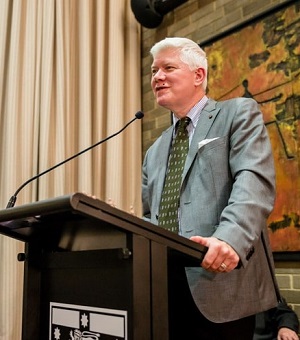
The expression ‘ethical dilemma’ has become overused and often applied without much if any thought about what it actually means

Professor Hayden Ramsay, DVC and Professor of Catholic Philosophy, presents a 12 part series of videos and articles in his Masterclass on Any Catholic University

The PM Glynn Institute has produced a report on palliative care within Australia
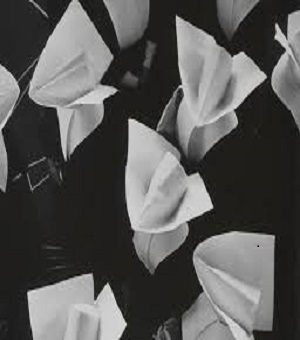
Lord Rowan Williams recently published book Tribalism's Troubles: Responding to Rowan Williams, launches in a virtual event held this week by the PM Glynn Institute

New ACU research is showing how busting a move via silent disco technology can boost the wellbeing of residential aged care residents with dementia.

The 30th anniversary of Ex Corde Ecclesiae (From the Heart of the Church) is an opportunity for us, as Australia’s largest Catholic University, to reflect on our character and role.

It is a great treasure of the long papacy of John Paul the Great and an entry point to understanding ACU for staff of all faiths and traditions.

Australian Catholic University (ACU) has appointed Professor Zlatko Skrbis as the University’s next Vice-Chancellor and President.

Thirty scholarship students will be the first to undertake the new Bachelor of Arts (Western Civilisation) at Australian Catholic University’s (ACU) North Sydney Campus next year under a generous fund...

Australia's workforce, economy and society needs the capabilities of a humanities education: critical thinking, analytical and research skills, and the ability to grapple with and communicate complex ...

Some people don’t support Glasgow Rangers, mindfulness or Country and Western music. Everyone supports ethics; which doesn’t mean everyone fully understands ethics or always acts ethically, but it doe...

Are faith and reason in conflict, or do they illuminate one another? We tackle an age-old question with Professor Hayden Ramsay, a Catholic philosopher and ACU’s Deputy Vice-Chancellor, Coordination.

ACU’s exploration of advance care planning, which enables patient wishes to inform decisions made by families and medical professionals and to respect patient autonomy and dignity, has led to the deve...
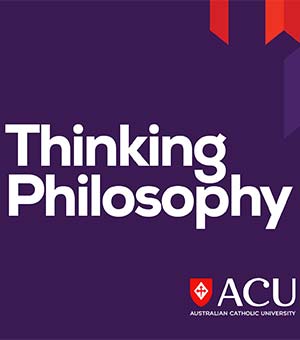
ACU last week launched Thinking Philosophy, a podcast exploring the research of our philosophers.

ACU expects to offer a new BA degree in Western Civilisation from 2021, after signing a Memorandum of Understanding (MOU) with the Ramsay Centre for Western Civilisation in Sydney today.
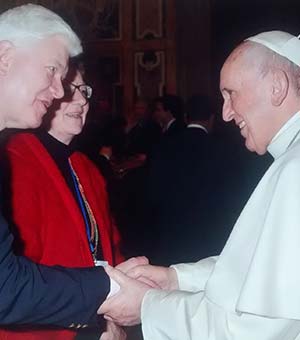
Leading British philosopher Professor John Haldane will join the Australian Catholic University this year to establish a new project to develop Catholic school education, situating this within a broad...

People who pursue beauty, fame and money above other goals are less happy than those who want to improve the world, new research has found.
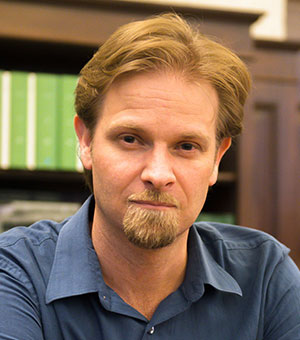
Professor Stephen Finlay has been appointed as the Director of a new institute dedicated to philosophical research at Australian Catholic University (ACU).